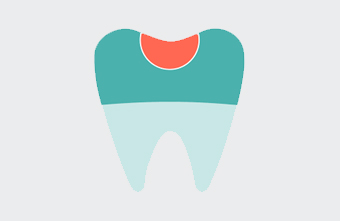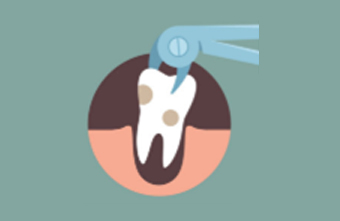
Dental Fillings
Simple dental filling is the insertion of a tooth coloured filler material (composite or GIC) in the cavity of the tooth left behind after removal of the tooth decay. Dentists have an array of filling material like composite and ionomers that mimic natural teeth to repair missing, worn, damaged or decayed teeth. Composites are bonded to tooth , often allowing the dentist to make a more conservative repair to the tooth.
Indirect restorations
Another form of dental fillings is inlays to fill large cavities which is fabricated in ceramic or zirconia material. These are called Indirect restorations which include inlay and onlays.
In dentistry, inlays and onlays are a form of indirect restoration. This means they are made outside of the mouth as a single, solid piece, that fits the specific size and shape of the cavity. An inlay will incorporate the pits and fissures of a tooth, mainly encompassing the chewing surface between the cusps. There are times when a tooth suffers damage (from decay, for example) that is too extensive to be treated with a simple filling but not extensive enough to need a full-coverage crown. In these cases, the best option for restoring the tooth may be an inlay or onlay.
How It Works
Getting an inlay or onlay is very much like what you would experience having a crown placed, with one important distinction: less of your natural tooth structure will need to be removed by drilling when you receive an inlay or onlay. When you get a crown, the tooth needs to undergo significant reshaping so that it will fit inside its new covering. Since dentistry’s goal is to preserve as much of your natural tooth structure as possible, inlays and onlays may be recommended instead of crowns when a tooth can be restored with this more conservative type of treatment.

The first steps in getting an inlay or onlay are numbing the tooth and surrounding area with a local anesthetic, and then removing the decay. This is done in order to prevent the decay, which is actually a type of infection, from progressing deeper into the tooth.
Once the tooth has been prepared, an impression of it is made (either digitally or with a putty-like material) and sent to the dental laboratory. There, the impression is used to make a model of your tooth for the creation of your inlay/onlay. The final restoration can be made out of gold or a tooth-colored ceramic or resin.
Before you leave the office, a temporary filling will be attached to your tooth to protect it until the permanent restoration is ready. At your second visit, the permanent inlay/onlay will be attached to your tooth with either a resin that hardens when exposed to a special light source, or a type of permanent cement.
Inlays and onlays are strong, long-lasting, and require no greater level of care than any other tooth. Conscientious daily brushing and flossing, and regular professional cleanings at the dental office are all you need to make sure your restoration lasts for years to come.




